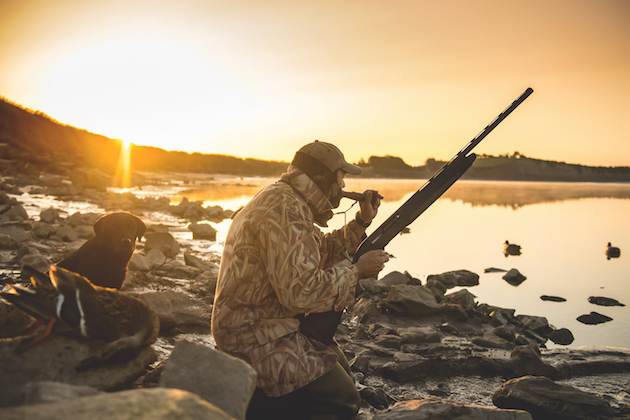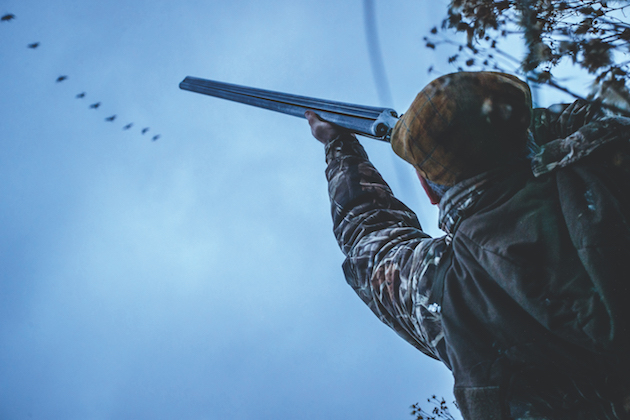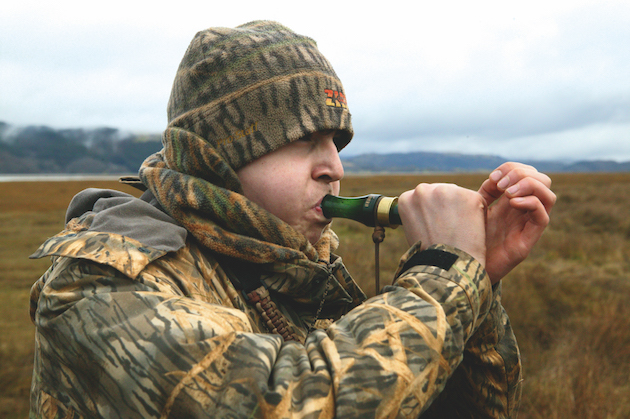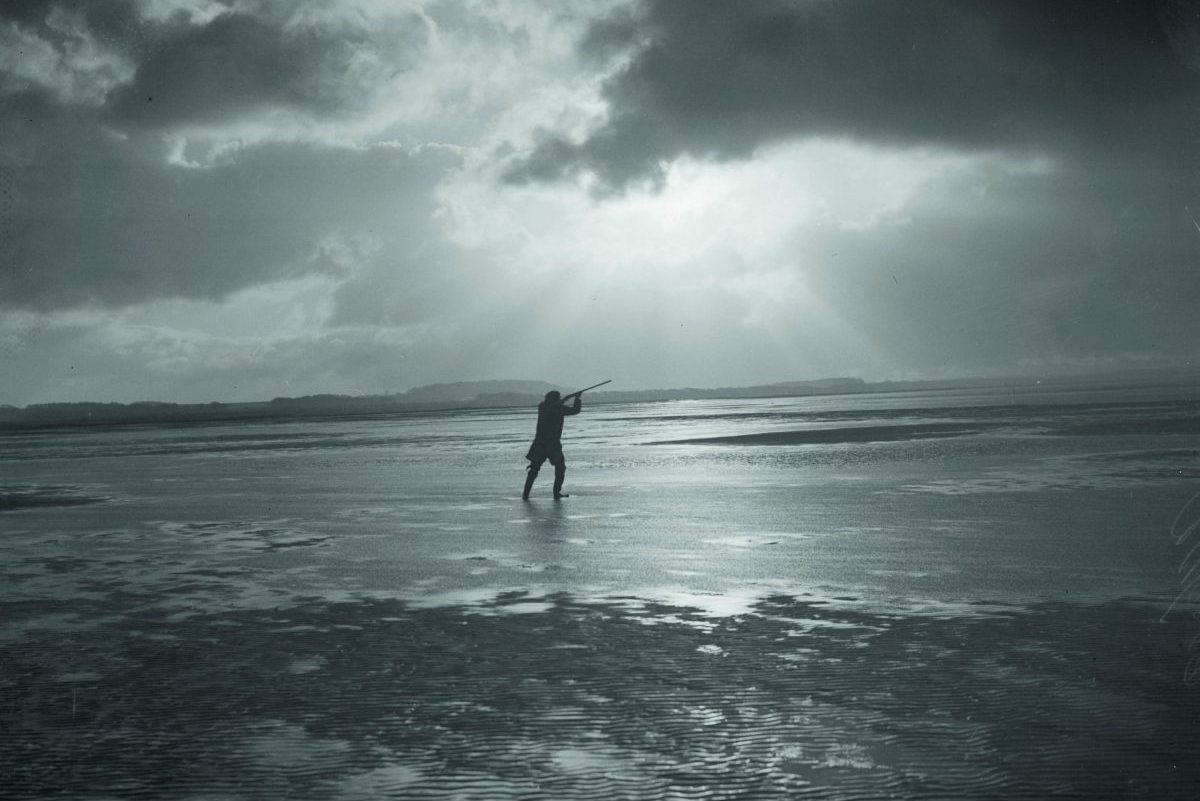What you need to know about wildfowling calls
Learn how to distinguish and imitate their calls and you will lure in the wildfowl to your gun, says Graham Downing

For as long as we humans have hunted wild duck and geese, we have used decoys and calls to attract them within range of a gun, bow or sling, or to lure them into waiting nets. Most species of wildfowl are intensely social birds. They will naturally congregate in large numbers in order to feed or roost. The belief that there are others of their kind gathered on a pond, lake or creek is enough to give passing birds the confidence at least to take a second look, if not to cup their wings, set their paddles and drop in to join the party.
Geese and duck calling tips
So it is no surprise that the skill of being able to call duck and geese is a greatly respected one among fowlers. Stanley Duncan, the celebrated founder of the Wildfowlers’ Association of Great Britain and Ireland — WAGBI, now BASC — was a master of fieldcraft and a leading exponent of the art. He would hold a wildfowlers’ meeting enthralled with his demonstrations of calling wigeon and curlew, which he did simply by whistling and with no artificial aid.
In the US, the spiritual home of duck calling, the art has been raised practically to a national obsession. There are duck calling competitions all over the country, the most celebrated of which is the World Championship Duck Calling Contest, which has taken place in Stuttgart, Arkansas, every year without exception since 1936. Victory in the championship is a surefire passport to a career in the shooting industry, while to have your call used by the champion caller is the Holy Grail sought by every manufacturer of duck calls.
Of course, the purest way to call wildfowl is with the unassisted human voice. Some fowlers have the knack of producing a really convincing quack with which to lure in a mallard, while many more can whistle up a wigeon or ‘peep’ a teal without artificial aid. It’s really useful to be able to do this when you do not have a wigeon whistle to hand.
Using an artificial duck call
The best of the duck calling tips for me however is to opt for an artificial duck call. You still see a few of the ‘Scotch’ bellows-type call in use. This has a rubber bellows that you can pump to imitate the mallard’s ‘highball’ hailing note and then shake gently to make the feeding call. My father had one of these and was a master at using it when I shot with him in my teens.
Most fowlers today, however, use an American-style mallard call made of wood or plastic. This comprises a barrel section with a tightly fitting stopper that has a reed which vibrates when air passes over it.
Cup your right hand around the end of the stopper and blow down the wide end of the barrel, manipulating the note with the right hand as you do so, and soon you are speaking the language of the mallard. There are literally dozens of manufacturers, most of them American, but my personal favourite call for many years has been the Olt 66. Turned from walnut, it has a soft reed that allows the user to explore the entire mallard vocabulary.
Usually the starting point is the so-called ‘highball,’ the loud quaaaa, quaaaa, quack quack quack that is used to attract the attention of passing mallard and turn them towards your decoys or shooting position. There is then the confidence call, a softer, gentler quarck quarck quarck that will reinforce the birds’ interest and hopefully get them heading your way.
Calling with a taka-taka-taka sound
The third basic call is the feeding chatter, made by tongueing a soft taka-taka-taka sound into your call to imitate feeding mallard. With birds circling overhead, that should be the clincher to get them pitching into your flightpond.
Top duck calling tips – listen to the birds
Mastering these calls is not easy and really the only way of doing so is to listen to mallard making them for real. That’s one of the key duck calling tips, because no amount of listening to other fowlers blowing their duck calls can equal the education you will get by sitting beside a flightpond on an autumn evening, or even the local park lake, and just listening to the birds, then imitating with your duck call what you have just heard.
Make a wigeon whistle
The whee-ooo whistle of the cock wigeon is one of the most atmospheric and evocative sounds that you can hear out on the marsh, and it is not difficult to imitate. The best way is to use a wigeon whistle, which you can buy from a shooting supplies shop or online, or which you can make yourself from two cartridge cases.
Take two empty shells, one with a deep brass head and one with a short head, remove the spent primers and primer pockets, cut away and discard the hulls. Then put the metal heads on the fire to burn out the base wads. Clean them thoroughly, lightly crimp the rim of the short head and push it hard into the long one, sealing the joint with epoxy glue. Then blow through the whistle to make an authentic wigeon sound.Again, the only way to learn how to replicate the tone and volume is to get out there and listen to cock wigeon in the wild, and then to practise imitating what you have heard.
Teal make a much softer, but instantly recognisable teep teep sound, which you will hear mostly in the evening as it is getting dark and the birds are coming into a pond or a flooded marsh to feed. You can buy a teal call but I have never found one that works for me and I much prefer to whistle teal by mouth.
Goose calls
Turning to geese, the two species that respond best to calling are the greylag and the pinkfoot. Commercially made calls are easy to obtain. I use a DJ Illinois River Valley BLG-04, but the trick is in learning how to use it, because as with all calls, it’s not merely a matter of picking up your goose call and blowing through it.
The greylag, with its aaangh aaangh note, is the easier of the two to imitate, though a greylag will throw in an occasional squeaky shriek at the end of its note, a bit like a country and western singer breaking into a yodel at the end of the phrase.
This is the difficult bit to replicate and you achieve it by quickly increasing the airflow through the reed. Pinkfeet make an utterly distinctive and thrilling ink-ink which can be made by focusing entirely on the squeaky end of the goose call’s range. It takes a bit of experimentation, but a sharp and explosive ca-ca will get you into the right area. After that, it’s again a matter of listening carefully to the real thing then getting lots of practice.
Finally, do not expect duck and geese to respond to your call at all times and under all circumstances. To understand what note to produce and when to produce it requires real fieldcraft that is born only out of long experience. Greatest success will be achieved when birds really want to drop in to feed and you can suggest — or even dictate — to them where they should do so, perhaps in competition with a flock of real duck or geese a quarter of a mile away. Evening flight is the best time to call duck.
As for geese, there is nothing more deadly than a foggy morning when a single bird, flying blind, will be desperate to join its mates on the ground. Get your goose calling right in mist or fog and you’re on your way to getting that pinkfoot in the bag.











